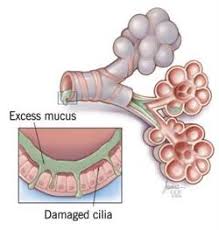
Health Care Ethics
Order Instructions:
Need only Australian references.
Please follow the file attached below “Unpacking the essay”
If essay guidelines are not followed you will be getting the essay back for redoing Thanks
SAMPLE ANSWER
Health Care Ethics
Patients have the right to decide what treatments and medications they would consent to or reject (Learder, 2015). It is an ethical requirement that clinicians offer their clients an opportunity to decide on their health. Instruments such as the advance care directives are there to promote the autonomy of patients (Craig, 2012). People have the right to plan for the future of their health, and they would exercise it by outlining their wishes and expectations when they are still healthy. This paper focuses on the ethical aspect of granting patient their wishes. The paper will consider the perspective of a registered nurse and that of a physician. Both professionals play significantly in safeguarding the health of their clients (Australian Commission on Safety and Quality in Healthcare (ACSQHC) 2010). The essay will begin by describing the features of a legal consent and why it is necessary to respect choices that patients make. The writer will then evaluate the appropriateness of paternalism in making medical decisions. The paper will also describe the roles of healthcare practitioners in upholding patient autonomy and pursuing their (patients’) wishes. The paper will end by discussing the Australian healthcare system and the legal and professional guideline that direct practitioners. By the end of the paper, the writer hopes to demonstrate a thorough understanding of the application of ethics in healthcare setups.
The basics of a legal consent include allowing patients with competent mental capacity a chance to decide on what should be done regarding their health (Eagle, & Ryan, 2014, Pg. 353). The provision is imperative that patients may have their preferred type of care regardless of the preferences of other parties including healthcare practitioners. For instance, if mentally-abled patients choose not to undergo a surgical process, other people would not overrule the decision and have them undertake the procedure. That would be regardless of how helpful the procedure could have been. Legal consent may not be a priority in emergency situations, especially when patients are unable to express their wish. The advanced care directive is an example of legal tools applied in promotion the promotion of healthcare that is centered to the patient and based on the rights and autonomy (Scholl, Zill, Härter, & Dirmaier, 2014). The form applies to adults, and it entails writing down one’s wishes, values, and directions regarding their health (The Government of South Australia, 2015). Concepts addressed in the form include future hospital and residential care, accommodation, as well as decisions and their making. People can also appoint their preferred persons to make decisions on their behalf in times when they are unable to do so due to disease. The directive applies any time that one’s decision-making is impaired as a result of disease. For its legal validity, the directive must bear the sign of the patient and a witness who is to affirm that the subject made the directions at their will and that nobody compelled them to do so (Department of Health and Aging, 2014). The understanding of mental impairment includes situations when patients are unable to understand what they are told even with the help of interpreters (Townsend, & Luck, 2012). The concept also entails the inability of patients to comprehend the consequences of receiving or not receiving care. Occasions when patients cannot communicate their choices also entail an impairment of decision-making. The complete assessment of decision-making could be performed through tools such as Darzin’s capacity assessment (Department of Health and Aging, 2014).
Respecting patient’s autonomy is an ethical provision that sustains healthy interactions between healthcare practitioners and their clients. Ethical conduct requires clinicians to educate their patients on available options but allow them to make their decisions freely. The practice protects patients from procedures they may consider unfit for them hence promoting their satisfaction. The approach also ensures that clinicians pay attention to the understanding of patients concerning health. Patients can use their understanding of health to decide on how they would wish to live. Therefore, respecting patient choices would be an important aspect of shaping the lives of the clients. The move is also important during the provision of cultural diverse and competent care. Different cultures may have varied perceptions on health issues and patient may require upholding their beliefs. Promoting autonomy and respecting the choices that patients reduces chances of conflict between one’s culture and their maintenance of health. Patients are responsible for their health, and autonomy gives them to manage it as they wish.
Under some circumstances, clinicians may not have to respect patient choices. In most cases, patients would have to give satisfactory explanations to the decisions they make. Nursing practice entails promoting the wellbeing of patients, and decisions that may not lead to the objective could be overruled. For example, patients may opt not to take medications on such explanations as the medicines are not to their taste. Nurses would try to compel and push such patients to go against their wish. In so doing, the practitioners would still be promoting the wellbeing of the patients without necessarily respecting patient autonomy and choices. Nurses may also have to overlook patient choices if such patients opt to engage in practices that would impair treatment procedures. For instance, the practitioners may restrict patients from taking certain foods that could impair treatment irrespective of how much patients would be yearning for them. Practices such as alcoholism would also attract special attention and declination of patient autonomy. Alcoholics may insist on drinking while still undertaking treatment. If alcohol would impair such treatment, nurses would most reasonably overlook patients’ choices and apply paternalism. Physicians and pharmacists would also take the same approach regarding such situations. However, the professionals may uphold patient autonomy and explore alternative strategies such as changing medication regiments to ones that patient preferences would not alter. Though the selected alternatives may not be as effective as the firstling choices, the practitioners would have achieved from the perspectives of respecting autonomy and that of treating the patient.
Paternalism entails making decisions on behalf of other people for their own good. The literal meaning of paternalism is assuming a fatherly role and controlling systems for other people as a father would do to his family. In healthcare setup, paternalism would entail having the government, hospitals, clinicians, or other persons’ wishes prevail over those of the patients. Usually, paternalism goes against autonomy as patient choices may not be regarded in decision-making. There are various reasons when parties may need to apply paternalism. The government could for instance regulate people’s healthcare choices so that they meet certain financial considerations (Wilson, 2013). Governments may also apply paternalism when controlling health behaviours of their citizens. For instance, they could control the consumption of certain foods and practices such as smoking and alcohol use (Thomas & Buckmaster, 2010). Clinicians often apply paternalism when prescribing drugs to their clients. Often, prescribers indicate drugs to patient based on their (prescribers’) own reasoning. The practice often involves an assumption that prescribers are informed about all factors necessary for consideration during treatment. Though the paternalism is unavoidable in most such situations, it may not always give the correct implication. For instance, clinicians would tend to assume that patients would not afford unfunded drugs and prescribe cheaper regiments without necessarily consulting their patients. The practice may not be justified as patients would need to know that better medications are available and make their own decisions regarding whether they would cater for their associated financial spending (Dare, Findlay, Browett, Amies, & Anderson, 2010). Paternalism may be necessary under certain circumstances in the clinical setup. For instance, practitioners may apply the move when patients do understand neither the benefits nor the consequences of the available approaches. In such situations, clinicians would choose the best approach for their clients and administer treatment. Such an approach would apply to nursing and other healthcare professionals such as physicians and pharmacists. The presence of an ACD would minimise the necessity for paternalism. Clinicians would, for instance, consult the beneficiaries included in the ACD for their decisions regarding care for the patients of interest. The persons whom the patient prefers to make decisions on their behalf are most likely to do the will of the patient.
Professional ethics and codes of conduct direct clinical practitioners to facilitate the making of informed choices by patients (Consumers Health Forum of Australia, 2013). Various frameworks guide the process of making ethical decisions in nursing. Most of the frameworks are international while others are unique to Australia. In nursing, such guidelines include the nurses’ code of conduct, the code of ethics, professional boundaries, and competency standards. The code of ethics requires nurses to focus on human rights when delivering their services (Nursing and Midwifery Board of Australia, 2013a). So as to avoid conflicts regarding treatment practices for patients among the involved parties, clinicians should purpose to apply the provision of services included in the wishes of the patient s indicated in their ACDs. The code of professional practice entails maximisation of patient safety by requiring nurses to observe the law and meet create a reputable image to the community (Nursing and Midwifery Board of Australia, 2013b) Practices such as the use of life support machines, resuscitation, euthanasia, and organ donation would only be appropriate if the patient does not reject them in the ACD (Ebrahimi, 2012). Patients’ preferences would significantly influence the nature of care that nurses would offer. For instance, the practitioners would have to look for alternative methods of care if patients are against practices such as the use of life support machines and resuscitations. Physicians would also encounter the same and they would have to recommend care that does not contradict the preferences of their patients (Mendelson, n.d).
Conclusion
Ethical standards are crucial considerations in health care practices. Patients are entitled to care that values their beliefs and that which addresses their concerns. There are legal and ethical frameworks guiding nurses, physicians, and other clinicians on how to administer care that meets the ethical expectations of patients. Codes of conduct, professional ethics, and legislative guidelines in Australia ensure that clinicians do not overlook the wishes and concerns of their patients. Ethical conduct of clinical practitioners has tremendous influence on patient satisfaction and it would have significant impact on outcomes. It is always ethical to let the patient’s decisions concerning their health prevail over those of other parties. The role of clinicians would mostly be informing patients so that they can make choices from the information they get. Paternalism denies patient control over their lives. Though the aim of the practice is to offer the best to subjects, it may not always generate the best results. Before resolving to apply paternalism, clinicians should seek other approaches such as the ACD. Such mechanism would reduce the chances of legal and ethical questionings, and they would also facilitate settlement of disputes among interested groups such as patients’ families and the clinical team (Lawrence, Willmott, Milligan, Winch, White & Parker, 2012, Pg. 404). Nurses, physicians, pharmacists, and other clinicians encounter different situations that would require critical decision-making to determine the appropriate approaches to adopt. During such conflicting situations, clinical professionals should refer to ethical, professional, and legal frameworks (Nursing and Midwifery Board of Australia, 2013c; Nursing and Midwifery Board of Australia, 2014). Clinicians should ensure that they give satisfactory care to patients by paying attention to the concerns, beliefs, and values that their clients express (Oliveira, Refshauge, Ferreira, Pinto, Beckenkamp, Filho, & Ferreira, 2012). So as to have the necessary understanding of such factors, clinicians would have to establish interactive relationships with their subjects. Not only would healthy interactions yield desirable outcomes, but they would also enhance patient safety and minimise legal conflicts.
References
Australian Commission on Safety and Quality in Healthcare (ACSQHC) (2010) Australian Safety and Quality Framework for Health Care. Retrieved from http://www.safetyandquality.gov.au/wp-content/uploads/2012/04/Australian-SandQ-Framework1.pdf
Consumers Health Forum of Australia. (2013). Informed consent in health care. https://www.chf.org.au/pdfs/chf/Informed-Consent-Issues-Paper.pdf
Craig, E. (2012). The ethics of involuntary psychiatric treatment. University of Western Australia. Retrieved from https://repository.uwa.edu.au/R/-?func=dbin-jump-full&object_id=34175&local_base=GEN01-INS01
Dare, T., Findlay, M., Browett, P., Amies, K., & Anderson, S. (2010). Paternalism in practice: informing patients about expensive unsubsidized drugs. Journal of Medical Ethics, 36(5), 260-264.
Department of Health and Aging, Government of South Australia. (2014). Advanced Care Directive Fact Sheet. Retrieved from http://www.sahealth.sa.gov.au/wps/wcm/connect/045059804459d8048921ab76d172935c/ACD+Fact+Sheet+PC+20140613.pdf?MOD=AJPERES&CACHEID=045059804459d8048921ab76d172935c
Eagle, K. & Ryan, J. (2014). Potentially incapable patients objecting to treatment doctors’ powers and duties. Medical Journal of Australia, 200(6), 352-354
Ebrahimi, N. (2012). Ethics of euthanasia. Australian Medical Student Journal, 3(1).
Lawrence, S., Willmott, L., Milligan, E., Winch, S., White B., & Parker, M. (2012). Autonomy versus futility? Barriers to good clinical practice in end-of-life care: a Queensland case. Medical Journal of Australia, 196(6), 404-405.
Leader, S. (2015). Complicating consent. Medical Journal of Australia. Retrieved from https://www.mja.com.au/insight/2015/16/stephen-leeder-complicating-consent
Mendelson, D. (n.d). Legal and ethical ramifications of withdrawal of life support systems from incompetent patients. School of Law, Deakin University. Retrieved from http://www.aic.gov.au/media_library/conferences/medicine/mendleson.pdf
Nursing and Midwifery Board of Australia. (2013a). Code of ethics for nurses in Australia. Retrieved from http://www.nursingmidwiferyboard.gov.au/documents/default.aspx?record=WD10%2f1352&dbid=AP&chksum=GTNolhwLC8InBn7hiEFeag%3d%3d
Nursing and Midwifery Board of Australia. (2013b). code of professional conduct for nurses in Australia. Retrieved from http://www.nursingmidwiferyboard.gov.au/documents/default.aspx?record=WD10%2f1353&dbid=AP&chksum=Ac7KxRPDt289C5Bx%2ff4q3Q%3d%3d
Nursing and Midwifery Board of Australia. (2013c). National competency standards for the registered nurse. Retrieved from http://www.nursingmidwiferyboard.gov.au/documents/default.aspx?record=WD10%2f1342&dbid=AP&chksum=N5ws04xdBlZijTTSdKnSTQ%3d%3d
Nursing and Midwifery Board of Australia. (2014). Nurse practitioners standards for practice. Retrieved from http://www.nursingmidwiferyboard.gov.au/documents/default.aspx?record=WD13%2f12248&dbid=AP&chksum=F8%2bT8IAwM%2b3Z%2fPacPxiVnA%3d%3d
Oliveira, V. C., Refshauge, K. M., Ferreira, M. L., Pinto, R. S., Beckenkamp, P. R., Filho, R. F. & Ferreira, P. H. (2012). Communication that values patient autonomy is associated with satisfaction with care: a systematic review. Journal of Physiotherapy, 58(4), 215-229
Scholl, I., Zill, J. M., Härter, M., & Dirmaier, J. (2014). An Integrative Model of Patient-Centeredness – A Systematic Review and Concept Analysis. PLoS ONE, 9(9), e107828. http://doi.org/10.1371/journal.pone.0107828
The Government of South Australia. (2015). Advanced Care Directive. Retrieved from http://www.sahealth.sa.gov.au/wps/wcm/connect/Public+Content/SA+Health+Internet/Clinical+resources/Advance+care+directive
Thomas, M. & Buckmaster, L. (2010, December 15). Paternalism in social policy when is it justifiable? Parliament of Australia. Retrieved from http://www.aph.gov.au/About_Parliament/Parliamentary_Departments/Parliamentary_Library/pubs/rp/rp1011/11rp08
Townsend, R. & Luck, M. (2012). Protective jurisdiction, patient autonomy, and paramedics challenge of applying the NSW Mental Health Act. Australian Journal of Paramedicine, 7(4).
Wilson, T. (2013, December 12). Paternalism an unhealthy threat to freedom. The Australian. Retrieved from http://www.theaustralian.com.au/national-affairs/opinion/paternalism-an-unhealthy-threat-to-freedom/story-e6frgd0x-1226781030925
We can write this or a similar paper for you! Simply fill the order form!












